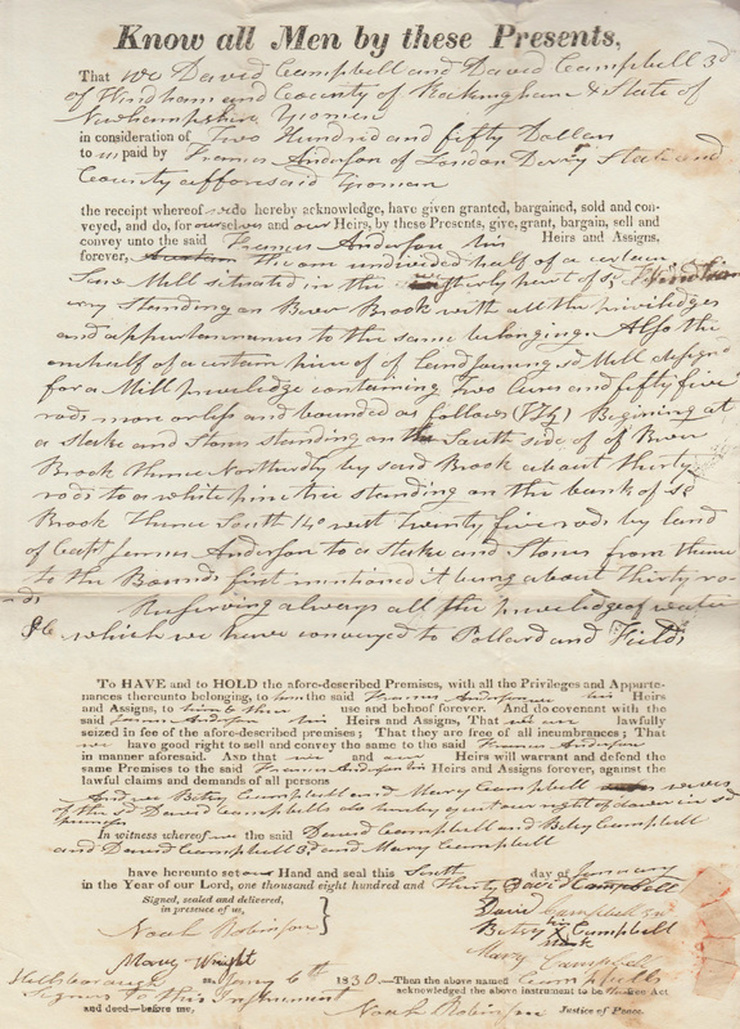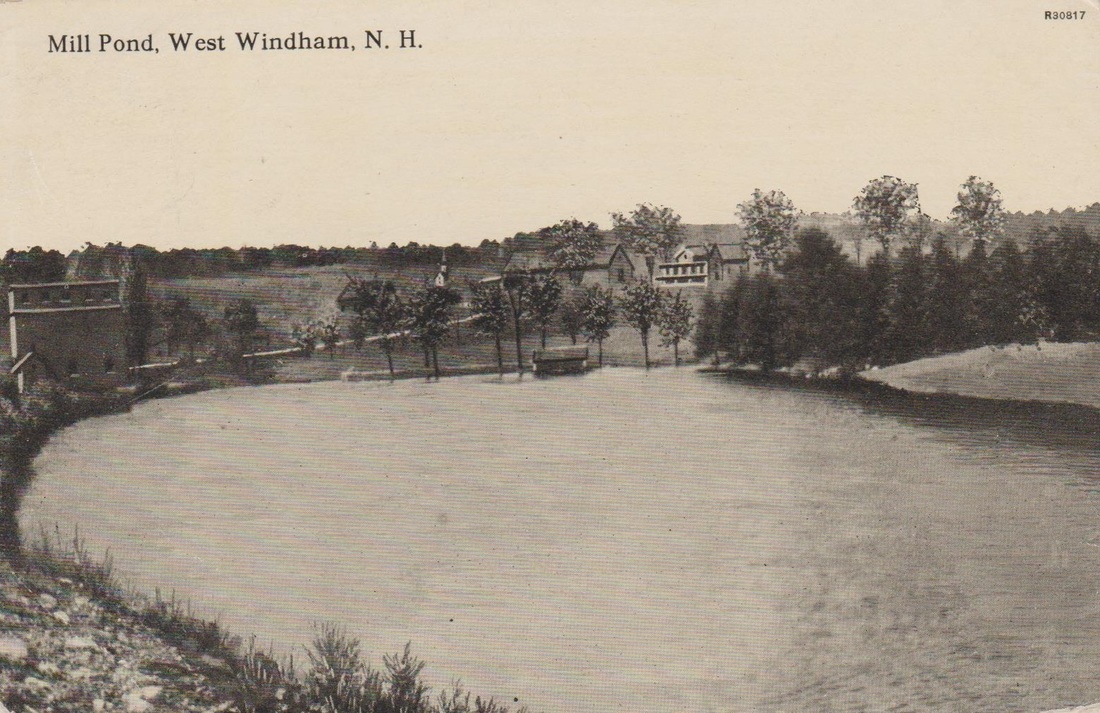"The fall of Cornwallis, Oct. 19, 1781, was substantially the closing military act of the war. A few skirmishes alone indicated that the war was not at an end. But the Continental Congress very prudently kept the ranks of the regular army filled. Windham was short of one man to fill her quota on the last of July.
Then it was that one who had repeatedly enlisted, and served his country in many campaigns, been wounded in her service July 30, 1782, and received a bounty of £20. This was David Campbell, Windham's last soldier in the war of the Revolution."
David Campbell died on March 11, 1830, shortly after he sold half an interest in the saw mill at Beaver Brook to Francis Anderson for $250.
The purchaser of the half interest in the mill, Francis D Anderson, was born in Londonderry in 1807. He married Jane Davidson of Windham, who was recorded as having been a, "modest, gentle, and refined lady, who was greatly esteemed for excellent qualities of mind and heart". Francis was likewise admired and was noted as having, "possessed excellent judgement, strong common-sense, and good executive ability". He died on March 6, 1866, and his wife outlived him passing away on March 13, 1880.


